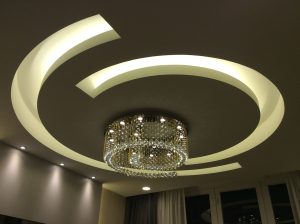Introduction
Japanese paper lamps, also known as washi lanterns, are a traditional form of lighting in Japan. Made from handmade paper called washi, these lamps are typically hung during festivals, weddings, and other celebrations. However, they have recently become popular as decorative items in homes, restaurants, and hotels around the world. In this article, we’ll explore the artistry behind the Japanese paper lamp, its history and significance in Japanese culture, and its popularity worldwide.
The Artistry of Japanese Paper Lamps
The beauty of Japanese paper lamps lies in the intricate details of their construction. Washi paper is made by hand using fibers from the bark of the kozo, mitsumata, and gampi plants. This process creates a thin and durable paper with a unique texture and natural color. The paper is then cut and folded into various shapes, including cylinders, spheres, and oblongs, which are then attached to wooden frames.
One of the key features of Japanese paper lamps is the patterns that are often printed or painted onto the paper. These patterns are derived from traditional Japanese art, such as calligraphy, sumi-e painting, and woodblock prints. The delicate nature of the paper allows these patterns to be seen clearly when the lamp is lit, creating a warm and inviting atmosphere.
The History and Significance of Japanese Paper Lamps
The use of paper lanterns in Japan dates back to the Heian period (794-1185), when they were primarily used in Buddhist temples and as street lighting. Over time, the use of paper lanterns expanded to include festivals, weddings, and other celebrations. Today, they continue to be popular decorations for special events and are also used as everyday lighting in homes and restaurants.
In addition to their decorative function, Japanese paper lamps hold symbolic significance in Japanese culture. The round shape of the lanterns is said to represent unity and harmony, while the warm glow of the light symbolizes hope and enlightenment. In some Buddhist tradition, paper lanterns are used to guide the souls of the departed to the afterlife.
Popularity Worldwide
The delicate beauty of Japanese paper lamps has made them popular not only in Japan but around the world. They are often used as decorative items in homes and restaurants, and are especially popular in Asian-themed decor. It’s not hard to see why— the warm glow and intricate patterns add an effortless elegance to any space.
Furthermore, Japanese paper lamps have become a popular DIY project for crafters and designers. There are countless tutorials and patterns available online, allowing anyone to create their own unique washi lanterns at home. Many creative minds have also experimented with unconventional materials, such as recycled materials, wire frames, and LED lights, to create modern variations of the traditional paper lamp.
Conclusion
Japanese paper lamps are an iconic symbol of Japanese culture and artistry. Their delicate construction, intricate patterns, and warm glow continue to capture the hearts of people around the world. Whether used in special celebrations or as everyday lighting, they are a beautiful reminder of the unity, harmony, and hope that they represent.




More Posts
Stunning Vintage Opaline Lights: Illuminating Homes with Timeless Elegance
Bringing Versatility to Light: Exploring the Benefits of Dual Light Technology
Shining Light on E14 Bulbs: The Ultimate Guide to Understanding and Using Them